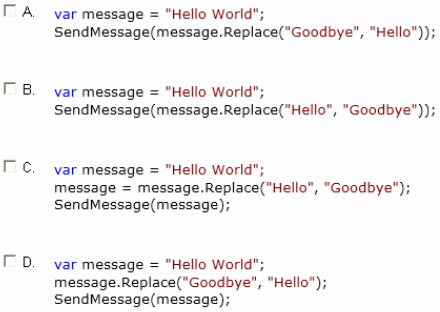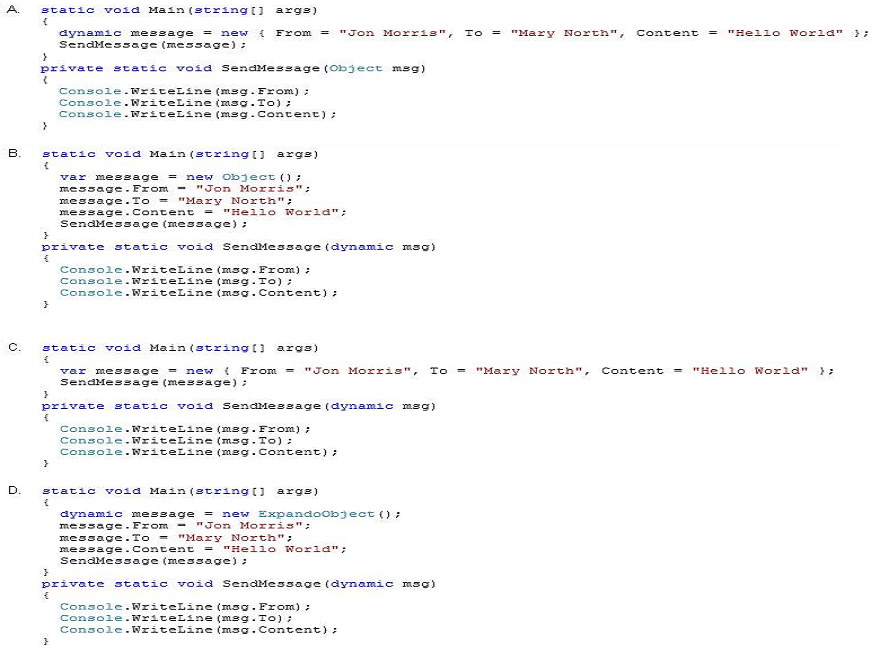READ Free Dumps For Microsoft- 70-483
| Question ID 17104 | You are developing an application by using C#. The application includes a method named
SendMessage. The SendMessage() method requires a string input.
You need to replace "Hello" with "Goodbye" in the parameter that is passed to the
SendMessage() method.
Which two code segments can you use to achieve this goal? (Each correct answer
presents a complete solution. Choose two.)

|
| Option A | Option A
|
| Option B | Option B
|
| Option C | Option C
|
| Option D | Option D
|
| Correct Answer | B,C |
Explanation Explanation: * The first parameter should be Hello. * String.Replace Method (String, String) Returns a new string in which all occurrences of a specified string in the current instance are replaced with another specified string. This method does not modify the value of the current instance. Instead, it returns a new string in which all occurrences of oldValue are replaced by newValue.
| Question ID 17105 | You are developing an application that includes a method named SendMessage.
You need to ensure that the SendMessage() method is called with the required
parameters.
Which two code segments can you use to achieve this goal? (Each correct answer
presents a complete solution. Choose two.)

|
| Option A | Option A
|
| Option B | Option B
|
| Option C | Option C
|
| Option D | Option D
|
| Correct Answer | C,D |
Explanation Explanation: D: ExpandoObject Represents an object whose members can be dynamically added and removed at run time. / The ExpandoObject class enables you to add and delete members of its instances at run time and also to set and get values of these members. This class supports dynamic binding, which enables you to use standard syntax like sampleObject.sampleMember instead of more complex syntax like sampleObject.GetAttribute("sampleMember"). / You can pass instances of the ExpandoObject class as parameters. Note that these instances are treated as dynamic objects in C# and late-bound objects in Visual Basic. This means that you do not have IntelliSense for object members and you do not receive compiler errors when you call non-existent members. If you call a member that does not exist, an exception occurs. Note: * Visual C# 2010 introduces a new type, dynamic. The type is a static type, but an object of type dynamic bypasses static type checking. In most cases, it functions like it has type object. At compile time, an element that is typed as dynamic is assumed to support any operation. Therefore, you do not have to be concerned about whether the object gets its value from a COM API, from a dynamic language such as IronPython, from the HTML Document Object Model (DOM), from reflection, or from somewhere else in the program. However, if the code is not valid, errors are caught at run time.

